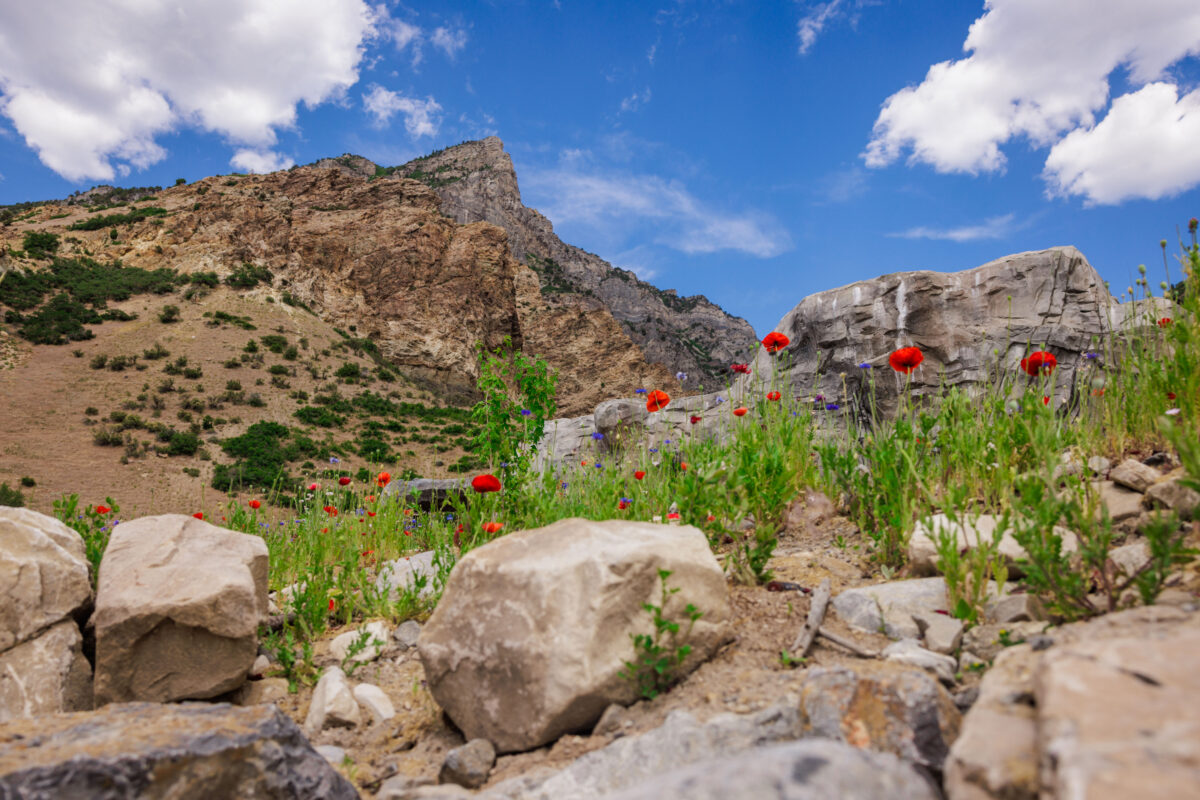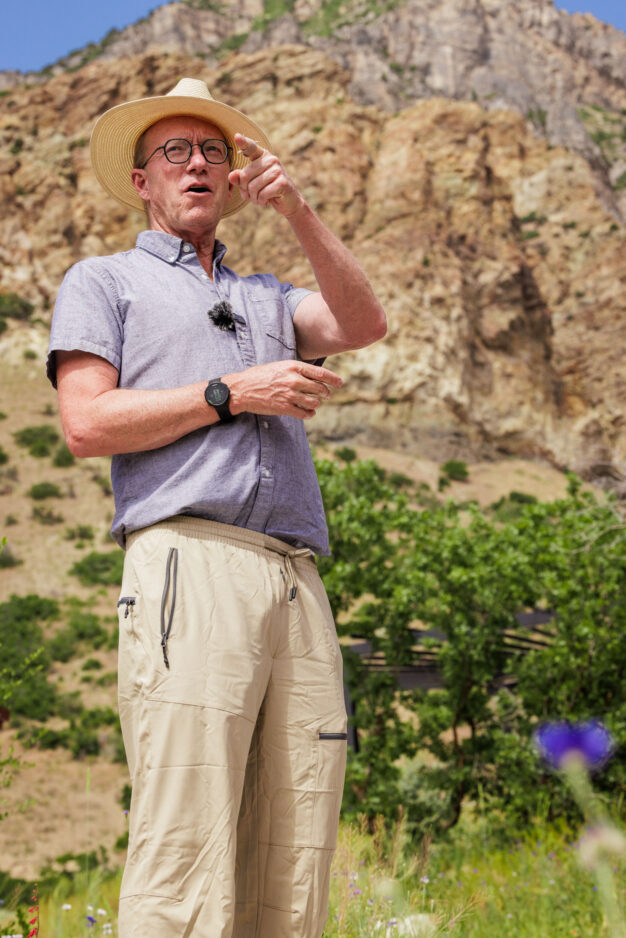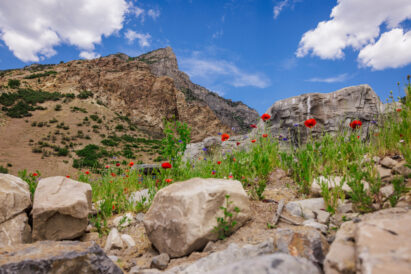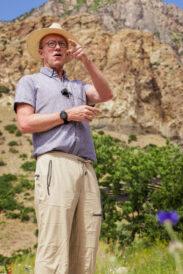Back in bloom: BYU researchers revamp wildflower project in Rock Canyon to reduce wildfire risk
- Brigham Young University Plant and Wildlife Sciences Professor Phil Allen is shown at Rock Canyon on Thursday, June 10, 2025.
- Wildflowers are pictured in Rock Canyon on Thursday, June 10, 2025.
- Brigham Young University Plant and Wildlife Sciences Professor Phil Allen is shown at Rock Canyon on Thursday, June 10, 2025.
A Brigham Young University research group has spent the last 20 years learning how to create wildflower meadows that are resistant to weed reinvasions, leading to reduced wildfire risk and beautified natural areas.
The reopening of the trailhead last October offered researchers an opportunity to begin anew with the project.
BYU Plant and Wildlife Sciences Professor Phil Allen and a group of students began weeding out invasive wheatgrass that inhabits the mouth of the canyon and planting wildflower seeds that were collected by hand from students thanks to an agreement the school has with Provo City and the Forest Service.
“We kept it weed free for three or four years and then just left it and it is intact,” he said. “The flowers were all in bloom a month ago. There’s very few in bloom right now, but the plants are still green.”
Invasive species like cheatgrass are dense and thick and consume a lot of water, leaving limited room for native plants and drying up by June, making them prone to fires, Allen explained. He said these dry plants can fuel fires throughout the region, citing the ongoing fire burning Grand Canyon’s North Rim.
Native plants, on the other hand, are perennial plants built to survive by spreading out and using little water, which keeps them green for longer.
“There are these pockets of beautiful, native, pristine habitats all over the place,” Allen said. “Now, if you look over at Y Mountain, you can see everything is brown. That’s all invasive plants. The natives are still green. And where we have native meadows, the fact that they remain green longer during the summer reduces the wildfire hazard potential.”
Replacing invasive species with native wildflowers is a significant long-term challenge, though, beginning with the limited supply of wildflower seeds.
Allen said companies like Granite Seed, the west’s leading native seeds supplier, do not invest in the specialized equipment required to farm some types of seeds because there isn’t enough demand.
BYU does not have the time or resources to capture all the seeds themselves, and many of the seeds they do collect are used for research purposes.
“As part of our research, we collect the seeds, we study them, we learn how to maximize the success of planting, and then the leftover seeds from our research are what we plant in Rock Canyon,” Allen said. “It will take years and years for this all to be complete.”
Allen hopes the need for water conservation and wildfire mitigation will spur an increased demand for wildflower seeds, leading seed companies to invest in their production and spurring wildflower growth in Rock Canyon and across the west.








